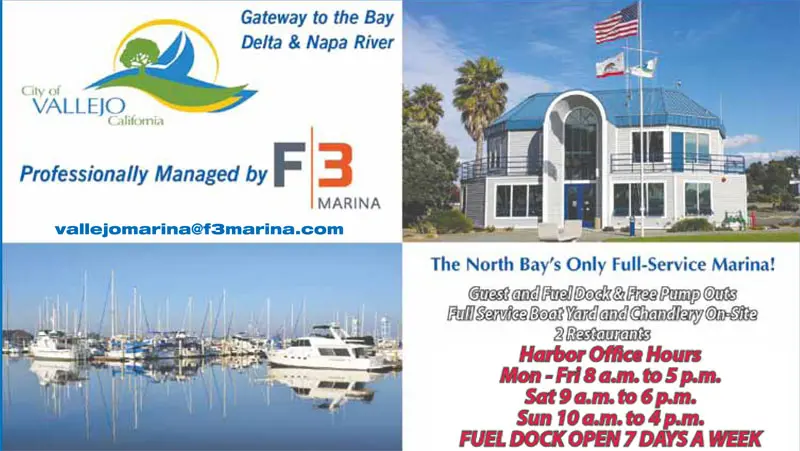
Having a Whale of a Time on the Course in Banderas Bay
Banderas Bay is one of the most desirable destinations on the Mexico cruisers’ dream list. But, thanks to the Vallarta Yacht Club, it also has a busy racing season. In February they hosted the WesMex Regatta with over 100 small-boat sailors in Optis, ILCAs [International Laser Class Association] and 420s. The vast majority of the 50+ Opti fleet and ILCAs were Mexican nationals except for Bill Pagels, who went south from Alameda Community Sailing Center to race with the ILCA 7 fleet, finishing in fourth.
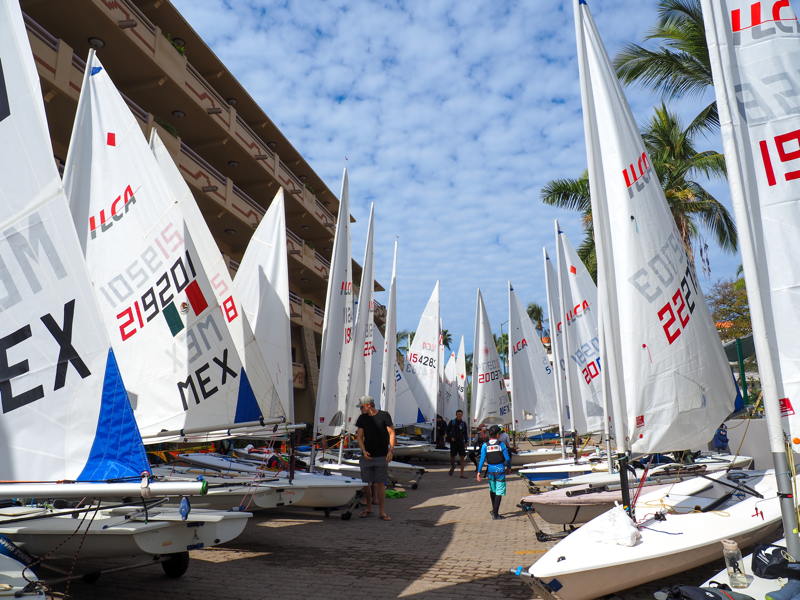
The Vallarta Yacht Club is also a host for the Banderas Bay Blast in November and for the Banderas Bay Regatta, which got underway yesterday with an eclectic collection of 22 boats in four divisions. Baja Ha-Ha lead guitarist Patsy Verhoeven took first in the over-45-ft cruising division aboard her Gulfstar 50 Talion in race one.
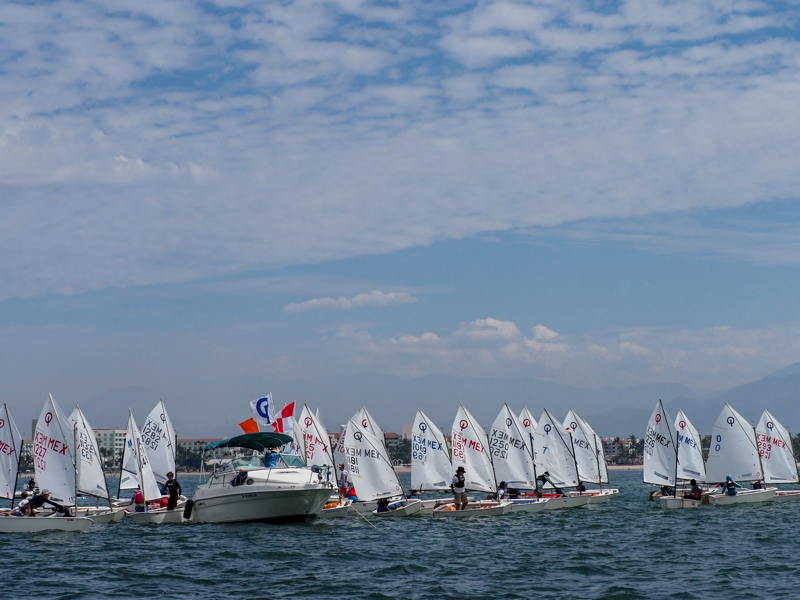

Following the WesMex Regatta in February, J/70 racing kept this busy cruising destination involved in racing. And just as in the Banderas Bay Blast, it’s been idyllic sailing weather, with the addition of breaching whales distracting skippers and trimmers from keeping an eye on the course and trim.

The whale above decided to join the monthly J/70 regatta hosted by Vallarta Yacht Club. Seven boats showed up to race, with the whale show dominating the action during race three on the second day of the regatta. Vallarta YC’s membership director Charity Palmatier said it was “the most fun thing that happened.” Not to say the racing wasn’t fun, but who can resist a whale show?!
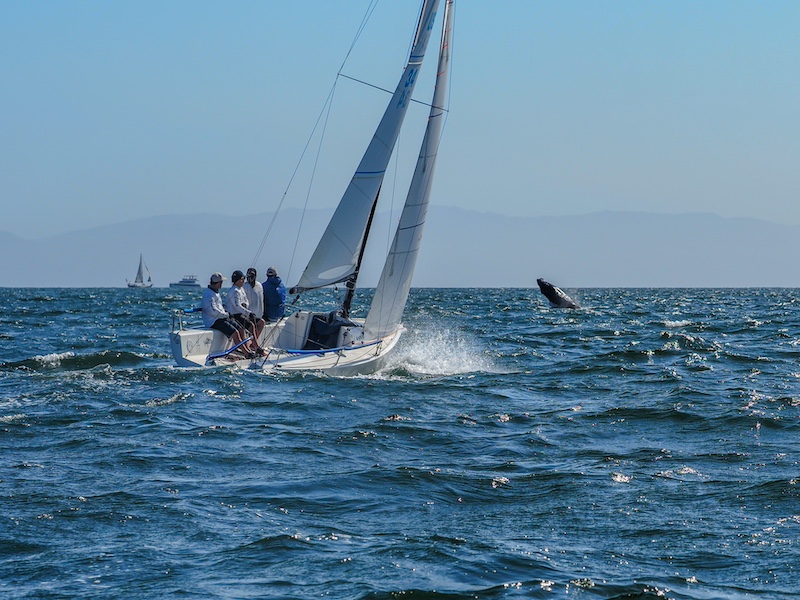
Charity tells us Carlos Sainz, affectionately known as ‘Tata,’ is an ILCA coach for the Vallarta YC junior sailing program. “And not incidentally, he’s a product of our program as well. He has just finished his bachelor’s degree in biology and is now pursuing his master’s degree, also in science!”
But wait, there’s more to tell about the sailing genes in this crew. Skipper Eduardo’s cousin is Elena Oetling, two-time Mexican Olympian in ILCA 6, most recently in the 2024 Paris Olympics. “So high performance clearly runs in his veins,” Charity adds. “All are great guys, and I particularly love the boat name, which is in reference to a highly endangered and beloved amphibian which resides in the canals outside Mexico City. They are a fan favorite for sure.”
When was the last time you sailed down to Vallarta Yacht Club for a J/70 or WesMex regatta, or perhaps a Banderas Bay Blast or Banderas Bay Regatta? Let us know in the comments below. Better yet, send us an email and some photos!
Good Jibes #183: Kiki Kormos on Buying a Boat Sight Unseen
Welcome back to Good Jibes! This week we chat with Kiki Kormos about the continuing saga of her 27-ft wooden boat Mayfly, which she bought from Nate Stephenson (Good Jibes Episode #177). Kiki is now living her dream of living on a boat. She’s even recording this episode from aboard!
Tune in as Kiki chats with Good Jibes host Ryan Foland about how to find love at first sight with your boat, make repairs and modifications, survive the first survey, and live on your boat, and why boaters are the friendliest people in the world.
Here’s a sample of what you’ll hear in this episode:
- Why you need to keep going, even in the face of rejection
- Every boat in Japan has this one feature.
- What motor is on Mayfly now?
- How did Kiki find an insurer?
- What lessons has Kiki learned from living on the boat?
Listen to the episode on Apple Podcasts, Spotify, and your other favorite podcast spots — follow and leave a 5-star review if you’re feeling the Good Jibes!
Learn more about Kiki on Instagram @Kiki_Kormos. Read “SV Gallia, from B.C. to Santa Barbara” by Nate Stephenson on page 36 of the January 2025 issue of Latitude 38. Learn more about our host Ryan at Ryan.Online.
Good Clean Fun Starts With the Pumpout Nav App
It all starts with you. Protect our waters from avoidable pollutants and harmful bacteria. Next time nature calls, or your holding tanks is full, use the Pumpout Nav app to find the nearest floating restroom, pumpout or dump station. Download it today.
Salty Reflections: A Good Old Yacht Harbor
Yacht harbors have definite personalities. Some are quite proper and yachty, and some are sterile, securely locked at each corner. Some are warm and friendly and others funky. A marina’s personality, like any neighborhood’s, will change to reflect the times and the current cast of characters who occupy it. Some are working class, a “Good Old Yacht Harbor” — non-pretentious marinas occupied by modest folks who love their modest boats and enjoy their boating friends. You won’t typically find megayachts, gold-platers or blue blazers here; paint-stained T-shirts, plaid shirts, overalls, shorts and deck shoes are the uniform of the day for most folks.
Alameda Yacht Harbor (now Fortman Marina), as it was known in the ’60s and ’70s, was a great Good Old Yacht Harbor. Situated on San Francisco Bay’s Oakland Estuary, it was a rich environment of old salts, character-filled wooden boats, and many “new technology” fiberglass boats promoted as maintenance-free. (Yes, see those ads in late-’70s issues of Latitude 38.) The surrounding industrial sites and shipping piers enhanced its non-yachty personality.
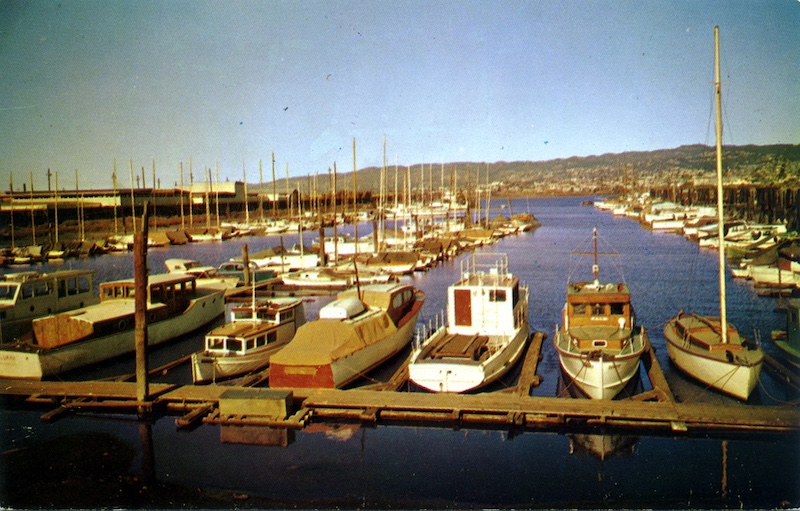
or sail, wooden boats were the heart of the marina.
The harbor began in the 1890s as the berthing basin for Alaska Packers’ Association’s square-riggers unloading Alaskan canned salmon. In the 1930s, the basin began evolving into a yacht harbor, complete with a six-ton marine railway for quick haulouts/bottom jobs. The railway was free to use, but had a five-day time limit. By the ’70s, the railway was all that remained of Alameda Boatworks, which had produced many beautiful wooden yachts through the 1940s, ’50s and ’60s.
By the early ’70s, the harbor was a colorful neighborhood of sailors, class boats and liveaboards. In 1972, I purchased a Nordic Folkboat built in Denmark in the 1940s. Naturally, I was placed among 12 neighbors on Folkboat Row, also known as “Middle Finger Cruising Club,” so named not for the well-known gesture, but because this row of slips was in the middle of the marina, and the Folkboat owners were a laid-back, chummy bunch.
Tour the Restored, Historic ‘Western Flyer’ in San Diego
The Maritime Museum of San Diego is welcoming visitors to tour the restored Western Flyer on Wednesday, March 26, from 10:00 a.m. to 4:00 p.m. The 77-ft sardine seiner became famous after featuring in the book, The Log from the Sea of Cortez, written by John Steinbeck about his six-week expedition in the Sea of Cortez with marine biologist Ed Ricketts in 1940.
After years of disappearing and reappearing, and surviving two sinkings, the boat was rescued and revived by the National Steinbeck Center with grant assistance from the National Park Service’s National Maritime Heritage Grant Program, received in 2018.
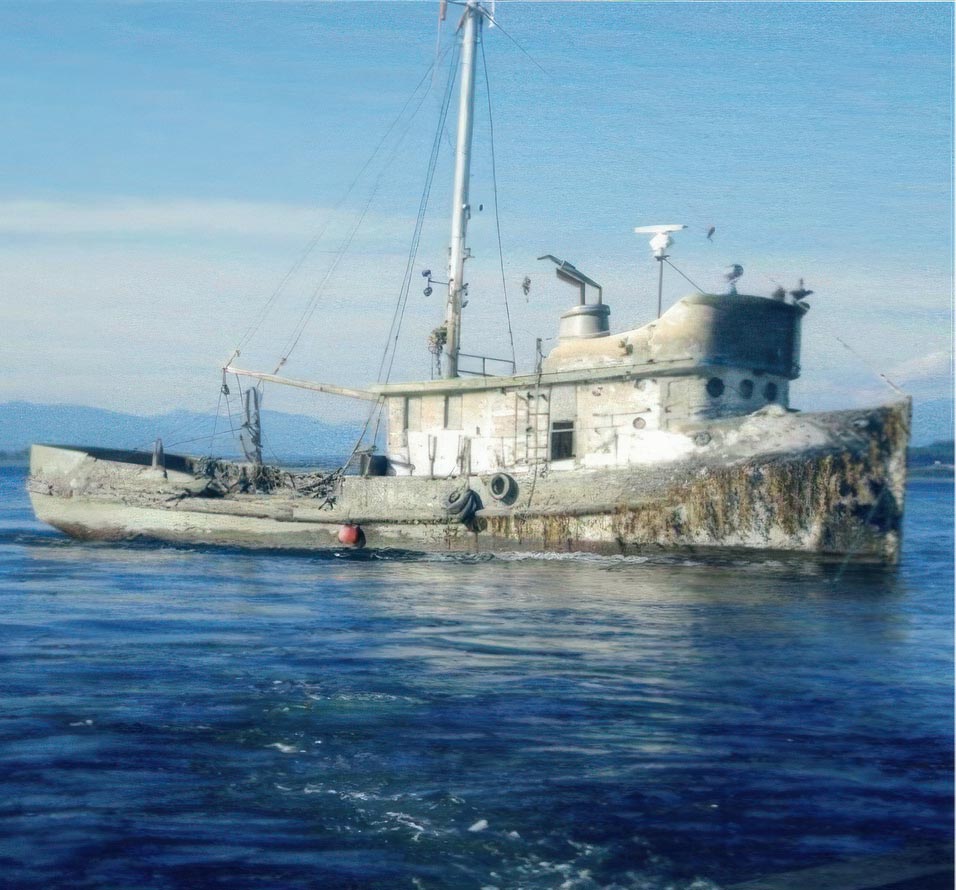
The Flyer is now fully restored and seaworthy, and is following the path of Steinbeck and Ricketts’ voyage 85 years ago. San Diego is just one of the stops on her three-month-long journey, and the open day commemorates the duo’s journey, which is credited with significantly influencing “modern ecological thought and conservation efforts.”
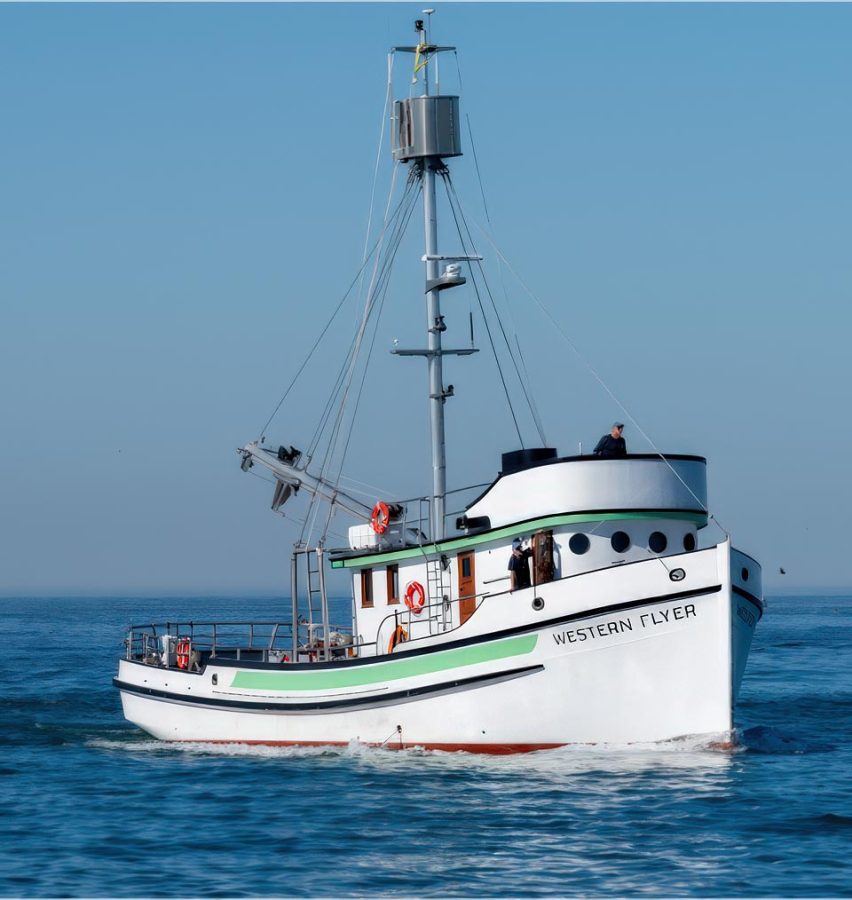
The Western Flyer set sail from Monterey on Sunday, March 16. Over the next three months, she will retrace her historic route, making stops along the California coast and throughout the Gulf of California before returning home in mid-June. The voyage’s core mission is celebrating the Flyer’s enduring legacy and future impact while advancing marine research, education, and community engagement throughout the region.
The Western Flyer Foundation is teaming up with local scientists, educators, and conservationists to study the Gulf’s rich ecosystems, exchange knowledge, and inspire new ways of seeing (and protecting) the marine world.
Public events such as the open day in San Diego will include hands-on education and demonstrations of scientific research, engaging visitors, “sparking curiosity and inspiring the next generation of ocean stewards.”
“The Western Flyer has always been a symbol of discovery,” Western Flyer Foundation’s executive director Sherry Flumerfelt said. “This expedition not only honors the legacy of Steinbeck and Ricketts but also highlights the critical work being done today to better understand and protect the Gulf of California and its thousands of important marine organisms.”
A tour of the Western Flyer is included with the regular Maritime Museum of San Diego admission ticket. But remember, it is one day only — Wednesday March 26, 10:00 a.m. to 4:00 p.m.
The next stop on the Flyer’s schedule is La Paz on Sunday, April 13, followed by Santa Rosalia on Tuesday, April 22, then the Newport Beach Wooden Boat Festival on Friday and Saturday, June 13–14. Along the way she will make stops in several other communities across California and Mexico, featuring boat tours, presentations, and local gatherings.
Full event details and updates can be found at www.westernflyer.org/baja2025.
Vallejo Marina: Gateway to the Bay, Delta, and Napa River
40′ to 45′ foot slips are now available at $9.97/ft. www.ci.vallejo.ca.us



